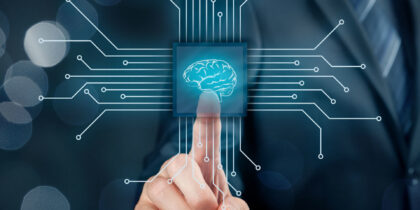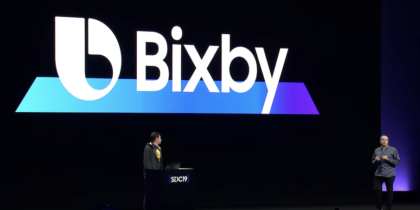In the space of a few decades the world of computing has changed irrevocably. We have gone from giant machines which took up entire rooms and were controlled by valves and switches, to massively powerful smartphones we carry around in our pockets or strap to our wrists, controlled by taps, swipes and touches.
We are now however on the cusp of a new era in computing, one where we interact with machines as if we were talking to another human, using text or voice. This evolution will see technology, like machine learning text analysis, facilitate natural language processing (NLP) to allow us talk to the machines just like we would talk to one another.
The rise of artificial intelligence (AI) combined with the availability of powerful processors and cloud computing access has allowed hardware manufacturers to take the first steps towards developing machines that attempt to mimic human responses to questions, devices as varied as cars, smartphones and smartwatches.
Use AI to Work Without Barriers
Learn how AI-powered devices enable the future of work. Download Now
While many companies are focusing their initial efforts on consumers, for enterprises and IT managers and line-of-business leaders, this trend is set to become a hugely important one in the coming years — and that means it is important to understand how the technology works and how to get the most out of it.
How Does Natural Language Processing Work?
Whether you are talking to your computer or inputting text, natural language processing is the technology which allows your computer to translate not just words, but sentences so that it can understand what you mean without having to get users to speak or type in a predefined way.
NLP combines linguistics and AI. First NLP must interpret what you say, and not only understand the individual words, but use syntax analysis to identify parts of speech; entity recognition for identifying persons, products, events, media and locations sentiment analysis for determining what is being expressed in the text.
This is what allows chatbots, or voice assistants, to understand sentence phrasing, slang and situational context. Of course, it would be impossible for those programming these services to teach them everything that there is to know about language — and this is where machine learning text analysis comes in.
By using the power of machine learning, chatbots and voice assistants can quickly learn from their interactions, meaning that over time they become smarter and more attuned to what specific ways they can help us as well as certain language preferences.
How Can NLP Benefit My Business?
Think about how you and the rest of your company access information today. For the most part, accessing a specific figure or section of a report means either reading reams of paperwork, or searching your computer using very specific search terms. Either way, these are time-consuming methods of accessing information which should be much more easily accessible.
Now, imagine you had a chatbot installed on your network. Everyone from the CEO to office workers can simply ask for the information they are looking for. Rather than asking an assistant for the latest sales figures for a particular division, an executive can interact with their computer that is fine-tuned to get the data instantly, saving time and boosting productivity for all concerned.
As machine learning text analysis becomes more powerful, enterprises will seek to create their own, custom-built chatbots, by accessing natural language APIs, which will allow IT managers to build NLP engines tuned specifically to the demands of their company, rather than relying on a general service, which might not work as well.
Finally, the combination of machine learning, natural language processing and the rise of biometric scanning will allow enterprises to improve their cybersecurity as well as physical security at their offices, by making it much harder for threat actors to impersonate employees.
The Right Device for the Right Job
We are no longer living in a world where using a computer means sitting at a desk. Whether we are in our homes, sitting on the bus or driving our car, we are surrounded by computers or different types, and increasingly all of these can be accessed with our voice.
However, for businesses, it is important to understand that while the way we interact may look the same, the underlying systems are often completely different, parsing and storing the data they collect in different ways. This can lead to questions about privacy and security, and as more and more hardware manufacturers add the ability to interact with computers in such a natural way, IT managers will need to ensure that company information is only used on secure networks, even if it’s just taking a note or sending an email.
With these security concerns and multiple applications for NLP devices, it’s important for IT professionals to evaluate how NLP and VAs may best benefit their enterprise. Not only does incorporating them properly bring significant productivity gains, they’ll also ensure your enterprise is ready for the next generation of work.
See how enterprise mobility solutions are changing the way that employees work on a daily basis.







